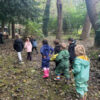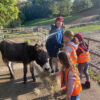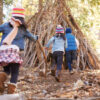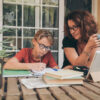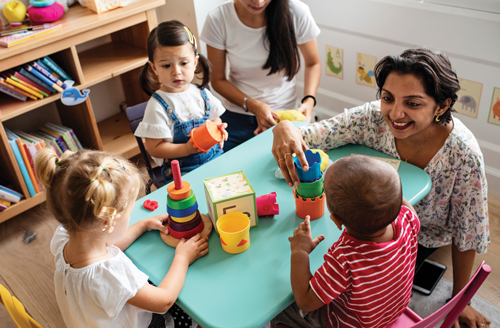
by Marsha Dann
Lead Teacher, Play B C Preschool
Why conversations matter in the early years
Building brains
A child is born already equipped to process language and able to distinguish between different speech sounds. Hearing words helps to build a rich vocabulary in the child’s brain long before they actually start speaking. The brain develops rapidly in the first three years and forms the neural connections that are used for all sorts of functions. During this critical period a child’s brain is flexible and particularly receptive to language input. It is literally shaped by the experiences encountered, reorganising itself as more language is heard, creating and strengthening more neural pathways.
Building relationships
Attachment theory tells us that we are born wired to seek relationships with others. When these relationships and attachments are positive and secure, children feel safe enough to explore the world and interact with others. This paves the way for learning and deepens understanding. Conversations with very young children help them to develop social skills. They learn that adults care about them and that they are valued and respected. Through meaningful discussion, children learn to identify and articulate their feelings and those of others. This fosters emotional intelligence and the development of self-awareness. They learn they have to take turns to speak and have to actively listen to what the other person says. This develops empathy, understanding and respect for others’ opinions.
Building knowledge
Language is used for communication but is also linked to memory, attention, problem solving and self-regulation. Good language skills support cognitive growth in general and literacy skills in particular. Conversations expose children to a wide range of information about family life, occupations, nature, animals and a host of other topics. They help them to learn, explore, and make sense of the world around them. They encourage questions, fuel curiosity and spark a love of learning.
Research suggests educational outcomes are significantly impacted by the quantity and quality of adult-child interactions.
Building vocabulary
A typically developing child will:
• At one, respond to their own name.
• At two, understand between 200 and 500 words.
• At three, use up to 300 words.
• At four, talk in sentences of four to six words.
• At five, have acquired almost all the grammar they will ever need for their first language.
The quality and quantity of children’s vocabulary at age five is a strong predictor of how well they are going to do in the future. Research suggests children with larger vocabularies have better brain connectivity and stronger links between the areas of the brain which process language. They are likely to do better at school and therefore have better life outcomes. This is why conversation is so very important. It is vital for the overall development of very young children in areas of language, cognitive, social, and emotional growth. When you talk to your child you show them how to express thoughts, feelings and ideas. They learn new words, grammar and concepts and begin to reason and make connections between things.
Talk to your child about any and everything because creating an environment that promotes rich language experiences can literally change their lives.
Play B C Preschools offer teacher led provision. We prioritise relationships, sensitive interaction, and fun but challenging learning through developmentally appropriate activities for our wonderfully diverse cohort. More than just a place, at Play B C every day is a learning adventure. Contact info@playbc.co.uk to arrange a visit. www.playbc.co.uk

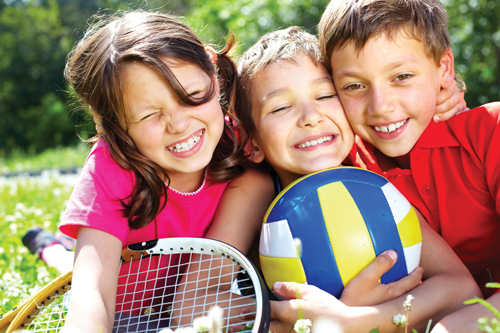

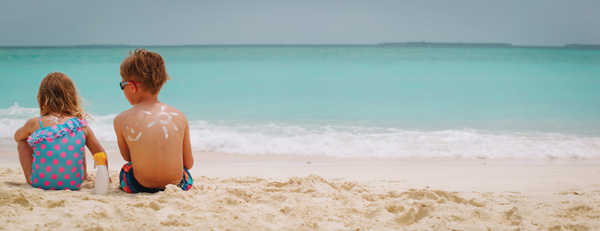

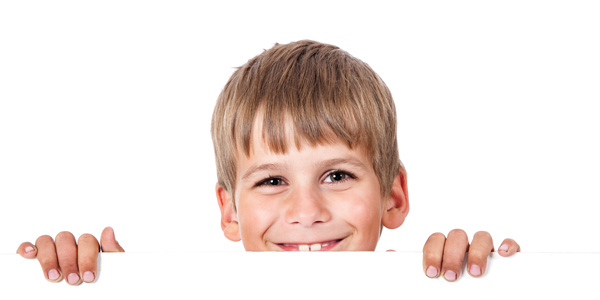
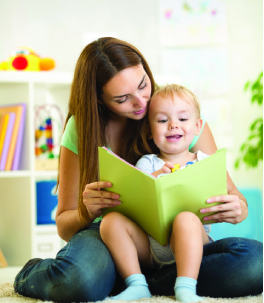
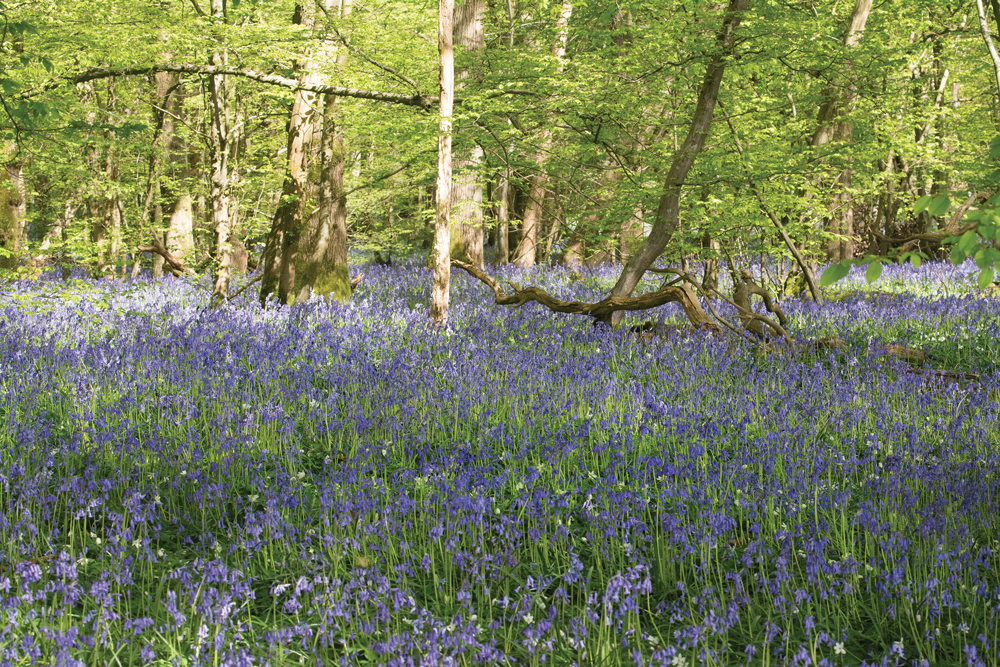
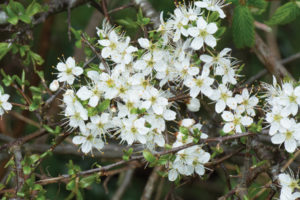 Sussex and Surrey have an abundance of woodlands – here the flowers appear early in the year when the ground has warmed up and it is light. Once the leaves on the trees have come out, the woods become too shady for most flowers to grow. Plants that take full advantage of the brighter spring conditions include wood anemones, bluebells, primroses, common dog-violets and lesser celandines. Of all these, perhaps the bluebell puts on the most impressive display, for few wild flowers cover the ground so completely or smell as sweet. Chinthurst Hill near Wonersh, Brede Hill near Battle, Heaven Farm near Uckfield and Angmering Woods near Arundel, all put on annual bluebell spectaculars along with a medley of other spring flowers.
Sussex and Surrey have an abundance of woodlands – here the flowers appear early in the year when the ground has warmed up and it is light. Once the leaves on the trees have come out, the woods become too shady for most flowers to grow. Plants that take full advantage of the brighter spring conditions include wood anemones, bluebells, primroses, common dog-violets and lesser celandines. Of all these, perhaps the bluebell puts on the most impressive display, for few wild flowers cover the ground so completely or smell as sweet. Chinthurst Hill near Wonersh, Brede Hill near Battle, Heaven Farm near Uckfield and Angmering Woods near Arundel, all put on annual bluebell spectaculars along with a medley of other spring flowers.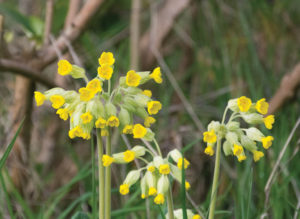 a captivating appeal for many people and to discover one is thrilling. Ditchling Beacon and Malling Down are excellent places to search for them. Look out now for the early purple orchid – its clusters of flowers, long spotted leaves and unpleasant smell help to identify it – and come back in the summer for more orchid spotting.
a captivating appeal for many people and to discover one is thrilling. Ditchling Beacon and Malling Down are excellent places to search for them. Look out now for the early purple orchid – its clusters of flowers, long spotted leaves and unpleasant smell help to identify it – and come back in the summer for more orchid spotting.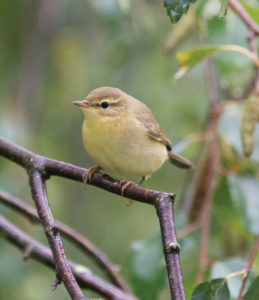 There is no better season for listening to bird song and often the adventures begin by simply opening a window! Every habitat has its own star performers with some having flown vast distances to be with us. If you want to hear some outstanding virtuosos then head to heathlands such as Chobham, Pirbright, and Iping and Stedham Commons. Here you may hear (if not see) buzzy Dartford warblers, melodious willow warblers or perhaps a chirring nightjar or two. Even more discrete than these birds are the nightingale – its drab, brown colouring making it almost impossible to spot in the dense undergrowth it inhabits. Its song, though, is unmistakable and the male sings both day and night until it finds a mate. Make your way to Ebenhoe Common, Pulborough Brooks and Puttenham Common for an unforgettable auditory experience. Make a note of International Dawn Chorus Day which is on Sunday 2nd May this year. Events are usually planned by a range of local wildlife groups.
There is no better season for listening to bird song and often the adventures begin by simply opening a window! Every habitat has its own star performers with some having flown vast distances to be with us. If you want to hear some outstanding virtuosos then head to heathlands such as Chobham, Pirbright, and Iping and Stedham Commons. Here you may hear (if not see) buzzy Dartford warblers, melodious willow warblers or perhaps a chirring nightjar or two. Even more discrete than these birds are the nightingale – its drab, brown colouring making it almost impossible to spot in the dense undergrowth it inhabits. Its song, though, is unmistakable and the male sings both day and night until it finds a mate. Make your way to Ebenhoe Common, Pulborough Brooks and Puttenham Common for an unforgettable auditory experience. Make a note of International Dawn Chorus Day which is on Sunday 2nd May this year. Events are usually planned by a range of local wildlife groups.
